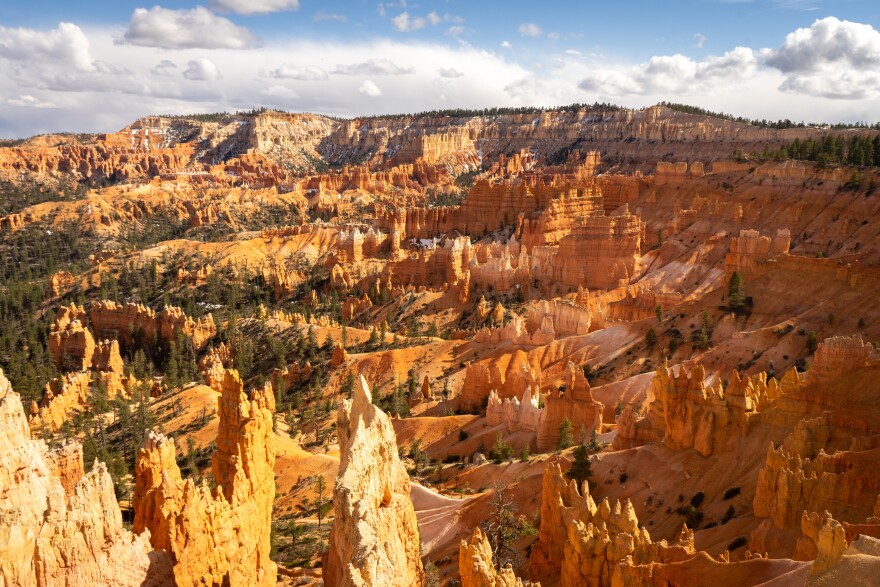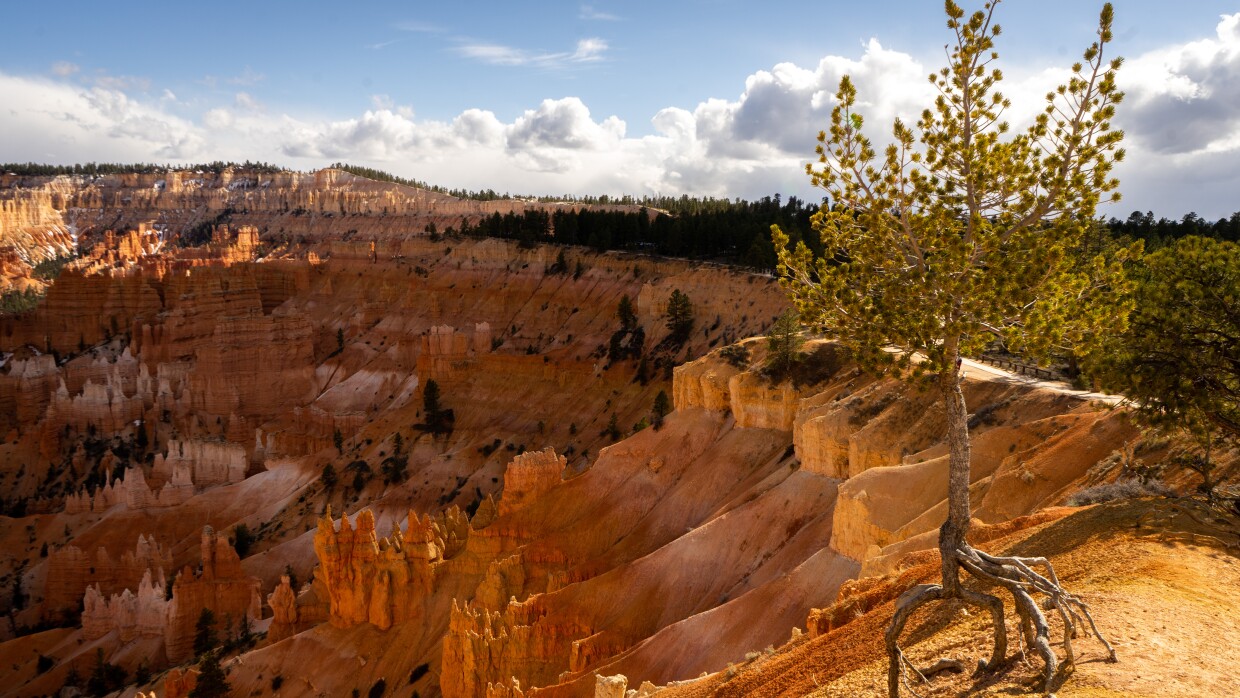In its century of existence, the landscape of Bryce Canyon National Park has changed, just as it has for millions of years. But with climate change and increased visitation, those geological processes are under threat, potentially changing people’s relationship with the land.
Walking along the rim of Bryce Canyon and looking out over its famous rock formations known as hoodoos, it’s possible to imagine the silhouettes of people, animals or objects in the orange rock. But what seems permanent, might not be.
“I've seen the Owl, the Sentinel, the Chinese Lantern, various famous hoodoos topple in my time here,” said Peter Densmore, the park’s spokesperson.
Densmore, who has been with the park for seven years, said Bryce Canyon has stopped giving hoodoos — like The Poodle — official names.
“People get so disappointed with that rate of change. You know, suddenly it doesn't look like a poodle anymore.”
How hoodoos are formed
A warming planet could shift how long rock shapes endure. To explain, Southern Utah University geologist Jason Kaiser went back to what the area was like 50 million years ago. He likened it to the southern Louisiana of today: “Kind of a swampy marshland, a lot of rivers dumping sediment in.”
And when that soft sediment turned into rock, it created weak layers. In more recent geological history, Bryce Canyon started to experience a lot of freeze-thaw cycles. Today, there are about 200 of those a year. So when water seeps through the rock’s fractures, it freezes.
“When water freezes, it expands,” Kaiser said. “And so it acts like a wedge and pushes those rocks apart along the fractures.”
This is called frost wedging. The combination of the area’s soft rock and its horizontal and vertical weakness creates those unique hoodoo columns.

And that’s what Native Americans encountered and named hundreds of years ago.
Native American relationship with Bryce
Daniel Bullets of the Kaibab Band of Paiute Indians said the way people usually say “hoodoo” is a mispronunciation of a Southern Paiute word.
“It means, like, weird or creepy,” he explained.
Bullets is his tribe’s cultural resources director, and his ancestors hunted and gathered there. Fast forward to now, and Bullets visits Bryce once or twice a year.
“It always brings a smile on my face to see the area and walk where my ancestors walked,” he recounted. “We try to make a connection through sight, sound, smell, taste.”
Members of his tribe still gather plants there, “some of them are medicine, some of them are food.” It’s his hope that they’ll get easier access to the land for gathering in the future.
But things could change for the Paiute’s ancestral territory.
Climate change and human impact
This year’s record snowfall caused a lot of extra erosion, and a number of man-made retaining walls collapsed. The park is bracing for more, Densmore said.
“Right now we're implementing results from a geotechnical study to rebuild it in such a way that even if we do have these intense weather events, the trail will be much more resilient.”
Kaiser, the geologist, said it’s hard to predict how changing weather patterns will affect the park in the next hundred years. He doesn’t know if weather events like heavy snow or monsoon seasons are an anomaly or a trend.
“Climate change makes it really hard to forecast what change is going to happen. It becomes a lot more variable, a lot less predictable.”
Kaiser recognizes the uncertainty is frustrating. But what he does know is that Bryce’s rim will continue to erode a few feet or so per century, leaving behind trees that look like they’re standing on stilts made of roots.

Some hoodoos will fall, and nature will carve out new ones. But with 2.35 million visitors now per year, people wandering off the trails could speed up that process.
At the base of the hoodoos are piles of clay and sediment which act “as a bit of the foundation, protecting the hoodoo,” Kaiser said. “And so just by taking one footstep into that soft clay could ultimately affect the lifespan of the hoodoo.”
Bullets of the Southern Paiutes hopes visitors will treat the land like it’s a family member.
“Come there with good intentions, and you'll definitely leave with a better respect of the land and a better respect for life.”
And if the park maintains its high standards for air quality, dark skies, and natural sound, future generations may go there and feel like they’ve stepped back in time.

This is one story in a two-part series on Bryce Canyon National Park’s centennial. Read here how park officials balance welcoming the public while also preserving the land.






